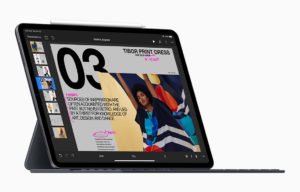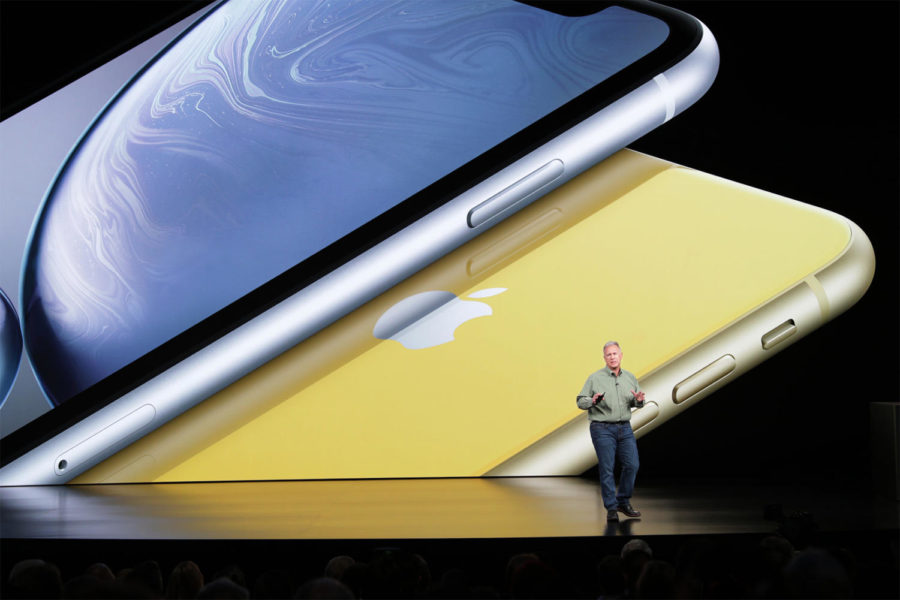October tech releases
It can be hard to keep up with everything released by Google, Apple, and others in October. Here is a summary
Paul Schiller announces the iPhone XS at the Apple Keynote in September.
November 12, 2018
October is a time for Halloween, falling leaves and the unceasing march of time that draws us closer and closer to the cold, icy nightmare of winter. However, October is also the time of year when many large technology companies release new phones and other electronic goodies. It can be hard to keep track of everything that has been announced, so here is a breakdown of the major releases from the past month.
Apple is still Apple
The season started with the Apple keynote in September and the announcement of the iPhone XR, XS, and XS Max. The XS is an incremental update from last years X, with a slightly better battery and processor. The XS Max is in many ways the same phone, but with a larger form factor. In order to combat criticism for their increasing prices, Apple released the iPhone XR, a phone that has essentially the same hardware specifications and design as the XS, but a cheaper screen and one camera. The result is a phone which has many of the same features as the newest iPhone, but a price that is about $250 less than the base-model XS Max.

Apple also released refreshed versions of the Apple Watch, Mac Mini, MacBook Air, and iPad Pro. The Apple Watch had a few interesting updates, including software that will alert you if it detects irregularities with your heart. The new iPad has a processor which has been compared to the Xbox One and a USB-C port. The iPad has a price which means that it should be able to replace a main computer. While reviewers have been positive about the hardware, they remain critical about the viability of iOS as a replacement for an operating system like MacOS or Windows.
Google faces competition

October also saw the release of two notable Android phones. The first was the Pixel 3, which Google released on October 8th. The Pixel is the officially branded Android smartphone, and last year’s Pixel 2 was known for having the best camera in any smartphone, beating even the newest generation of iPhones. The Pixel 3’s design was heavily leaked prior to release and also made fun of for its enormous notch. Despite the notch, Google’s flagship is still considered one of the best Android smartphones. The camera is unrivaled, even with one lens. However, one of the biggest problems with the Pixel 3 is the price, which is $800 for the smaller Pixel 3 and $900 for the larger Pixel 3 XL.

The most recent launch was the OnePlus 6T, a phone from the Chinese company OnePlus. OnePlus phones are popular among Android fans due to their flagship features and lower price. The most notable aspects of the 6T are parts of its design; it has one of the smallest notches on any phone and the unique design of the fingerprint sensor. What’s arguably most important is the price. The 6T does not have a QHD display or a superior camera. However, its $540 price makes it stand out, especially compared to the Pixel.
Other notable releases last month include the gaming-centric Razer Phone 2 and the LG V40, which is one of the last high-end phones to keep the headphone jack (r.i.p. in peace). Interesting things have been announced this October, and the months to come are sure to be interesting as well.







